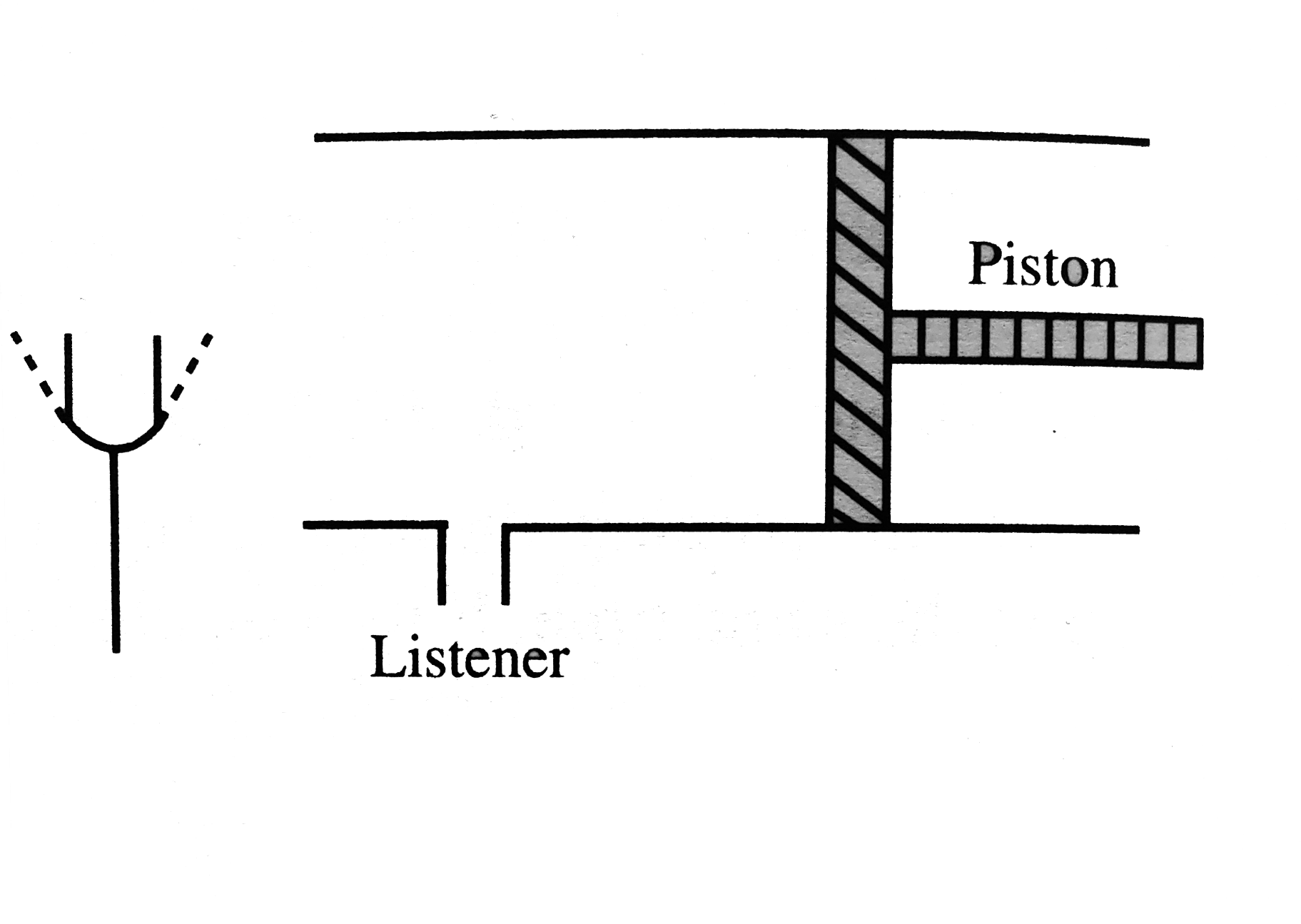Consider a cylindrical tube closed at one end and fitted with a conducting, movable piston at the other end. A cathode is fixed in the tube near the closed end and an anode is fixed with the piston. A gas is filled in the tube at pressure p. Using Paschen equation V = f(pd), show that the sparking potential does not change as the piston is slowly moved in or out. Assume that the temperature does not change in the process.
To solve the problem, we will use the Paschen equation and the principles of gas laws, particularly Boyle's Law, to show that the sparking potential remains constant as the piston is moved in or out.
1. Understanding the Setup:
- We have a cylindrical tube closed at one end with a movable piston at the other end.
- A cathode is fixed near the closed end, and an anode is attached to the piston.
- The tube is filled with gas at pressure p.
2. Paschen's Law:
- The Paschen equation states that the sparking potential V is a function of the product of pressure p and the distance d between the electrodes:
V=f(pd)
- Here, pd is the product of pressure and distance.
3. Applying Boyle's Law:
- Since the process is isothermal (temperature remains constant), we can apply Boyle's Law, which states that for a given mass of gas at constant temperature, the product of pressure and volume is constant:
PV=constant
- As the piston moves, the volume V of the gas changes, but the product PV remains constant.
4. Relating Volume and Distance:
- The volume V of the gas in the tube can be expressed in terms of the distance d (the length of the tube):
V=A⋅d
- Here, A is the cross-sectional area of the tube. Therefore, we can write:
p(A⋅d)=constant
- This implies:
pd=constant
5. Conclusion:
- Since pd is constant, we can substitute this back into the Paschen equation:
V=f(pd)=f(constant)
- This shows that the sparking potential V does not change as the piston is moved in or out, confirming that the sparking potential remains constant.
Final Statement:
Thus, we have shown that the sparking potential does not change as the piston is slowly moved in or out, assuming constant temperature.
---
- We have a cylindrical tube closed at one end with a movable piston at the other end.
- A cathode is fixed near the closed end, and an anode is attached to the piston.
- The tube is filled with gas at pressure p.
- The Paschen equation states that the sparking potential V is a function of the product of pressure p and the distance d between the electrodes:
V=f(pd)
- Here, pd is the product of pressure and distance.
- Since the process is isothermal (temperature remains constant), we can apply Boyle's Law, which states that for a given mass of gas at constant temperature, the product of pressure and volume is constant:
PV=constant
- As the piston moves, the volume V of the gas changes, but the product PV remains constant.
- The volume V of the gas in the tube can be expressed in terms of the distance d (the length of the tube):
V=A⋅d
- Here, A is the cross-sectional area of the tube. Therefore, we can write:
p(A⋅d)=constant
- This implies:
pd=constant
- Since pd is constant, we can substitute this back into the Paschen equation:
V=f(pd)=f(constant)
- This shows that the sparking potential V does not change as the piston is moved in or out, confirming that the sparking potential remains constant.
Thus, we have shown that the sparking potential does not change as the piston is slowly moved in or out, assuming constant temperature.
Topper's Solved these Questions
- ELECTRIC CURRENT THROUGH GASESBOOK - HC VERMA ENGLISHCHAPTER - ELECTRIC CURRENT THROUGH GASESEXERCISE - Objective 1
7 Videos
- ELECTRIC CURRENT THROUGH GASESBOOK - HC VERMA ENGLISHCHAPTER - ELECTRIC CURRENT THROUGH GASESEXERCISE - Objective 2
5 Videos
- ELECTRIC CURRENT THROUGH GASESBOOK - HC VERMA ENGLISHCHAPTER - ELECTRIC CURRENT THROUGH GASESEXERCISE - Short answer
6 Videos
- ELECTRIC CURRENT IN CONDUCTORSBOOK - HC VERMA ENGLISHCHAPTER - ELECTRIC CURRENT IN CONDUCTORSEXERCISE - questions for short answer
17 Videos
- ELECTRIC FIELD AND POTENTIALBOOK - HC VERMA ENGLISHCHAPTER - ELECTRIC FIELD AND POTENTIALEXERCISE - Objective 2
7 Videos
Similar Questions
A gas filled in a cylinder fitted with a movable piston is compressed. What is the nature of work done by the applied force?
View SolutionA gas filled in a cylinder fitted with movable piston is allowed to expand. What is the nature of the work done by the gas?
View SolutionA long cylindrical tube carries a highly polished piston and has a side opening . A tuning fork of frequency n is sounded at the open end of the tube . The intensity of the sounded heard by the listener changes if the piston is moved in or out. At a particular position of the piston he hears a maximum sound . When the piston is moved through a distance of 9cm, the intensity of sound becomes minimum. If the speed of sound is 360m/s, the value of n is

View SolutionThe two nearest harmonics of a tube closed at one end and open at other end are 220 Hz and 260 Hz. What is the fundamental frequency of the system?
View SolutionThe two harmonics of a tube closed at one end and open at other are 200 Hz and 260 Hz. What is the funamental frequency of the system?
View SolutionIn given figure, A uniform cylindrical tube closed at one end, contains a pallet of mercury 5cm long. When the tube is kept verticaly with the closed end downward, the length of the air column trapped is 30cm. Now the tube is inverted so that the closed end goes up find the new length of the air column trapped. atmospheric pressure =75cm of mercury. (Assume temperature remains constant in this process)

View SolutionLight passes through a closed cylindrical tube containing a gas. If the gas is gradually pumped out, the speed of light inside the tube will
View SolutionA cylinder fitted with a piston is filled with a gas at a given temperature and pressure. Explain on the basis of the kinetic theory the increase in pressure of the gas as its temperature is increased.
View SolutionAn air column in a glass tube , is open at one end and closed at the other by a movable piston . The air in the tube is warmed above room temperature , and a 384Hz tuning fork is held at the open end. Resonance is heard when the piston is 22.8cm from the open end and again when it is 68.3cm from the open end . (a) What speed of sodium is impliedby these data ? (b) How far from the open end will the piston be when the next resonance is heard ?
View SolutionA piston is fitted in a cylindrical tube of small cross section with the other end of the tube open. The tube resonates with a tuning fork of frequency 512 Hz. The piston is gradually pulled out of the tube and it is found that a second resonance occurs when the piston is pulled out through a distance of 32.0 cm. Calculate the speed of sound in the air of the tube.
View Solution